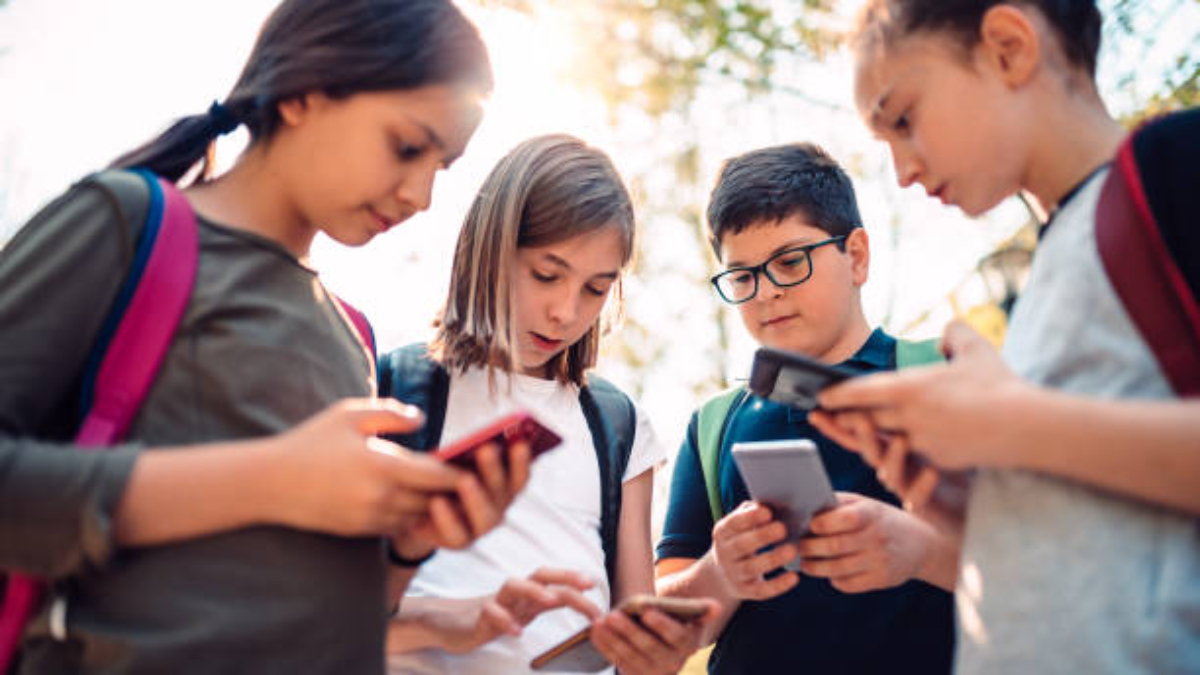Here’s how cell phone / smartphone affecting children in four key domains: mental health, academic performance, social skills, and physical health—based on recent studies.
Mental Health
A large data-analysis found problematic smartphone use is strongly associated with higher rates of depression, anxiety, stress and poor sleep in children/adolescents.
A 2023 WHO report similarly noted rising rates of “problematic” social media use and gaming, warning that excessive online use “has been shown to lead to depression. It also promotes bullying, anxiety and poor academic performance.
- Anxiety, Depression & Stress: Excessive cell phone / smartphone use—especially through social media, messaging apps, and online comparison—has been linked with increased anxiety, depression, stress, and lower self-esteem in children and teens.
- Addictive Patterns & FOMO: Many children experience nomophobia (fear of being without a phone), compulsive checking, and fear of missing out (FOMO) that can undermine emotional regulation and mental wellness.
- Sleep Disruptions: Evening phone use significantly shortens sleep, lowers sleep quality, and increases night awakening. Excessive use tend to affect compromising mood, memory, and emotional control that creates mood swing and effects on children’s study.
📚 Academic Performance
Smartphones in the classroom fragment attention. Experimental studies show even mere phone notifications can degrade task performance.
A review of cognitive research notes that mobile devices degrade focused attention: for example, just having a phone present can slow reading or disrupt learning tasks in children.
- Reduced Focus & Classroom Distractions: Notifications and multitasking with phones impair attention and distract from lessons, reducing engagement and understanding.
- Reduced Face-to-Face Interaction: Excessive screen time can crowd out real-life social play and communication. An observational study of young children (ages 3–7) found that those with >3 hr/day of screen time scored significantly lower on social skills like cooperation, empathy, self-control, keeping away from friends and family members. It shows reduced social interaction and pro-social behaviors.
- Lower Academic Outcomes: Students with heavier non-educational phone use tend to score lower on tests. Conversely, school-wide phone bans in places like New York State and Portugal have been reported to improve student engagement and test performance, especially among lower achievers.
- Potential Learning Benefits: When used judiciously—for educational apps, research, or homework—smartphones can support learning. The key is structured and purposeful use under guidance.
🤝 Social Skills
- Decline in Real-life Interaction: Heavy phone use replaces face-to-face play, reducing development of empathy. Its also affects communication skills and emotional intelligence especially in young children.
- Cyberbullying & Social Conflict: A significant number of school disputes and bullying incidents now begin online. Texting and social media exchanges can erode peer relationships and well-being.
- Online Social Bonds: In contrast, moderated phone use can enable maintaining friendships or accessing support communities—beneficial when in-person interaction is limited.
🩺 Damaging Physical Health
- Reduced Physical Activity & Obesity Risk: Higher screen time correlates with more sedentary behavior, fewer hours of active play, and increased obesity risk.
- Sleep Loss Effects: As mentioned above, poorer sleep from device use predisposes children to daytime fatigue, emotional issues, impaired learning, and weight gain.
- Eye Strain & Postural Issues: Prolonged close screen viewing can cause digital eye strain (dryness, blurred vision, headaches) and “text neck” or posture-related musculoskeletal complaints.
✅ Strategies to control mobile use in children
These findings highlight consistent trends: heavy, unstructured smartphone use poses risks across mental, academic, social, and physical domains. Still, balanced, guided use (e.g. for learning or connection) may offer benefits.
To help minimize risks:
- Set daily screen-time limits, especially reducing (or eliminating) device use before bed.
- Remove phones from children’s bedrooms at night to improve sleep quality.
- Implement school and home policies (e.g. phone bans during class or dinners).
- Encourage active, non-screen activities (sports, reading, family time).
- Promote face-to-face social interaction and empathy-building.
Monitor mood, anxiety, behavior—seek professional help if screen dependence of your children impacts their well-being.

Add a Comment